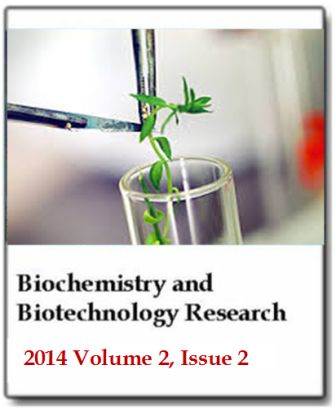Detection and differentiation of pathogenic H5 and H7 influenza A virus subtypes in Indonesian poultry by multiplex reverse transcription-polymerase chain reaction
R. Wasito, H. Wuryastuty, G. Tjahyowati, S. H. Irianingsih, T. Tyasasmaya and R. K. MaesBiotechnology and Biochemistry Research
Published: May 26 2014
Volume 2, Issue 2
Pages 27-31
Abstract
Influenza A viruses (AIV) are known to infect birds and have 16 hemagglutinin (H1-16) and 9 neuraminidase (N1-9) subtypes. The H5 and H7 hemagglutinin subtypes are circulating in poultry and continue to cause morbidity and mortality in Indonesian poultry operations. At present, the laboratory diagnosis of influenza A virus is still based on virus isolation and conventional RT-PCR, both of which are time consuming and a relatively expensive. Multiplex RT-PCR (mRT-PCR) is designed to amplify more than one target gene using multiple primers in one reaction. The mRT-PCR is designed to overcome the above-mentioned virus isolation and conventional RT-PCR shortcomings, while maintaining required sensitivity and specificity. In the present study, sera and lung tissues were obtained from poultry suggested of having AIV infection, based upon combination of pathological examination, serological testing and virus isolation. Viral nucleic acid were extracted from the specimens using commercial kit. Three separate sets of primers were used to amplify AIV matrix, H5 and H7 sequences. The respective sizes of the amplification products were 1023, 456 and 208 bp. Based on the results obtained, it was concluded that the mRT-PCR technique has high specificity to detect AIV and to differentiate between the pathogenic H5 and H7 hemagglutinin subtypes in chickens, quails and ducks. This technique could be applied to routine biosurveillance of influenza A virus in chickens in Indonesia.
Keywords: Biosurveillance, influenza A viruses, mRT-PCR, pathogenic hemagglutinin, poultry.
Full Text PDF
